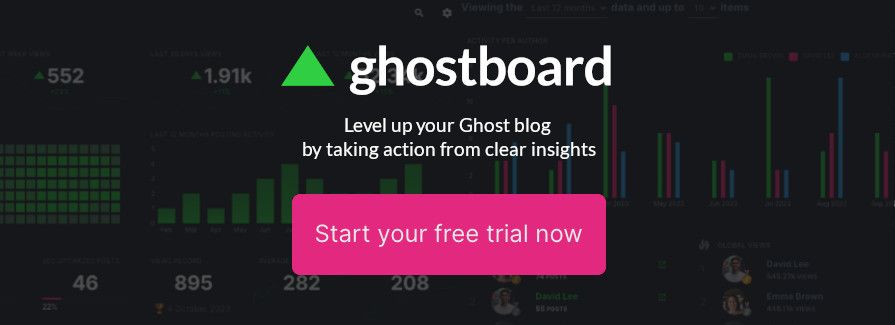How to add tables in your Ghost blog

Tables are one of the most underrated tools to make your blog posts clearer, more helpful, and more professional. Whether you're comparing products, listing features, or showing pricing — a good table can make your content stand out.
But if you're using Ghost, you might have noticed something missing…
👉 There’s no built-in “Insert Table” button in the editor.
Don't worry — in this post, you'll learn two super-easy ways to add tables to your Ghost blog that look clean, work perfectly, and boost your content’s readability. Let's go! 🚀
🧩 Why Add Tables to Your Ghost Blog?
Before we jump into the how, let’s talk about why you should use tables:
- ✅ Clarity: Tables organize information in a way that’s easy to scan.
- ✅ SEO: Well-structured content = better user experience = higher rankings.
- ✅ Professional Look: Readers trust content that looks well formatted.
✅ Method 1: Add Tables Using Markdown
If you're writing in Ghost and want a fast, clean way to create simple tables, Markdown is your best friend.
🔧 How to do it:
- In the Ghost editor, click the “+” button.
- Select Markdown (not just a paragraph).
Paste this table format:
| Product | Price | In Stock |
|-----------|-------|----------|
| Coffee | $5 | Yes |
| Tea | $3 | No |
| Espresso | $4 | Yes |
You will see:
| Product | Price | In Stock |
|---|---|---|
| Coffee | $5 | Yes |
| Tea | $3 | No |
| Espresso | $4 | Yes |
✅ Done! When you publish or preview the post, it will appear as a styled table.
✅ Method 2: External free tools
There are a few external tools like:
- https://www.tablesgenerator.com/markdown_tables (easier)
- https://tableconvert.com/ (a bit more complex)
It lets you build the table visually, then copy the Markdown format ready to paste into your Ghost post. Zero coding skills needed!
✅ Method 3: Add Tables Using HTML
If you want more advanced table formatting (colors, borders, headers, styles), you can use HTML directly.
🔧 How to do it:
- In Ghost, click the “+” button.
- Choose HTML as the block type.
Paste this code:
<table>
<thead>
<tr>
<th>Service</th>
<th>Cost</th>
<th>Available?</th>
</tr>
</thead>
<tbody>
<tr>
<td>SEO Audit</td>
<td>$150</td>
<td>Yes</td>
</tr>
<tr>
<td>Content Writing</td>
<td>$100</td>
<td>No</td>
</tr>
</tbody>
</table>
You will see
| Service | Cost | Available? |
|---|---|---|
| SEO Audit | $150 | Yes |
| Content Writing | $100 | No |
Then preview or publish — voilà! You’ve got a working table in your post.
🔥 Bonus Tips for Table SEO
Want to make sure your tables help your blog grow? Follow these quick tips:
✅ Use keywords in your headers
Google uses header rows to understand what the table is about. Instead of generic labels like “Option 1” and “Option 2,” use descriptive terms like “Ghost Starter Plan” or “Monthly Price.”
✅ Don’t overuse tables
Tables are powerful, but only when used with purpose. Don’t force them into every post — use them when they’ll truly improve clarity.
✅ Add alt text (if you’re using images in tables)
If you include small images (like logos or icons), don’t forget to add alt text for accessibility and SEO.
🧠 Recap: Which Method Should You Use?
| Method | Best For | Skill Level |
|---|---|---|
| Markdown | Simple tables, quick formatting | 🟢 Beginner |
| HTML | Custom styling, more layout control | 🟡 Moderate |
| Table Tool | Fast creation of Markdown tables visually | 🟢 Beginner |
Final Thoughts 💬
Just because Ghost doesn’t have a native table button doesn’t mean you're stuck. With Markdown or a simple HTML block, you can add professional-looking tables that improve your blog content and help readers take action.
And remember — clear content keeps people on your page longer, which is great for SEO, engagement, and growing your audience. 💡
Now that you know how to add tables to your Ghost blog…
👉 What will you use your first table for?
Let us know in the comments — or tag us on X/Twitter with a screenshot! 🚀
Level up your Ghost blog 🚀
Start your free trial now and explore all Ghostboard features for free. No credit card is required.

